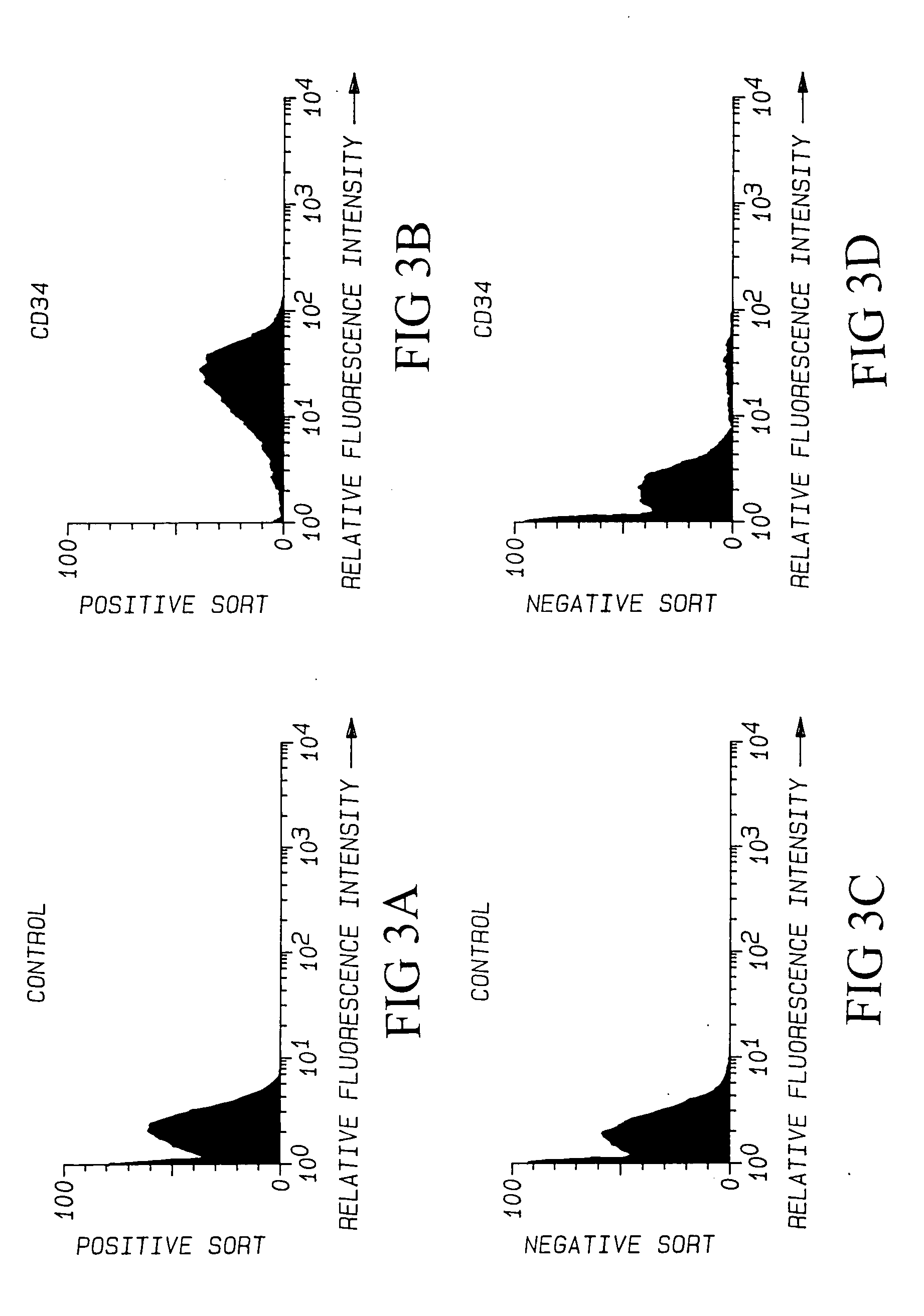Sulfation-independent L-selectin or E-selectin ligand (HCELL) and therapeutics thereof
a technology of eselectin and lselectin, which is applied in the field of sulfation-independent lselectin or eselectin ligand (hcell) and therapeutics thereof, can solve the problems of inability to produce reproducible assays, and initial attempts to use single cell suspension preparations deposited on glass slides utilizing a cytocentrifuge (shandon lipshaw, pittsburgh, pa.)
- Summary
- Abstract
- Description
- Claims
- Application Information
AI Technical Summary
Benefits of technology
Problems solved by technology
Method used
Image
Examples
example 1
[0137] The procedure for the in vitro binding of human or rat lymphocytes to KG1a cells was adapted from the rat lymphocyte—lymph node (frozen section) binding assay which has been described by Stamper and Woodruff (1976) and Sackstein et al. (1988) as described herein above. Cytocentrifuge preparations of KG1a or other cell lines were made on a Cytospin 3 Cytocentrifuge (Shandon Lipshaw, Pittsburgh, Pa.) following the manufacturer's instruction (Cytospin®3 Cell Preparation System Operator Guide) with modifications of the sample chamber to provide appropriate placement of the cytocentrifuge cell pellet onto slides for use in an adherence assay as described herein above.
[0138] Cell Separation: Cell separation procedures for blood cells as are generally known to those skilled in the art are used to separate lymphocytes and granulocytes from peripheral blood samples, from bone marrow aspirates, and from vertebral bodies donated through organ harvests. More specifically:
Peripheral Bl...
example 2
[0152] Lymphocytes Bind to KG1a. Lymphocytes (both PBL and TDL) adhered specifically and reproducibly to KG1a, but not to RPMI 8402, HL60, Nalm 16, K562, or Raji cell lines in the in vitro binding assay (Table 1). All experiments were performed in parallel with LN frozen sections as positive controls. Lymphocyte binding to KG1a was observed under conditions identical to those whereby L-selectin mediates binding of lymphocytes to LN HEV.
[0153] Lymphocyte Binding to KG1a is Mediated by L-selectin. To directly examine whether lymphocyte attachment was mediated by L-selectin, PBL were pre-incubated with the anti-L-selectin mAb LAM1-3, anti-CD45, or IgG1 isotype control antibodies. The LAM1-3 antibody completely inhibited lymphocyte binding to KG1a and LN control, while CD45 and isotype control mAbs did not affect binding (FIG. 1A & 1B). In order to quantify the relative amounts of antibody attachment to lymphocytes, antibody-treated lymphocytes were incubated with goat-anti-mouse FITC-...
example 3
[0159] Pretreatment of KG1a with Anti-CD34 Antibodies Did Not Inhibit Adherence of Lymphocytes. Cytocentrifuge preparations of KG1a were preincubated with anti-CD34 antibodies and the binding assay was performed in the presence of the antibodies (Table 2). Monoclonal antibodies to four different CD34 epitopes were used alone or in combination, including the clones My10, QBEND10, 8g12, and 12.8, in amounts ranging from 0.2 to 17 mg / slide. Anti-CD45 (irrelevant control) and IgG1 (isotype control) antibodies were also tested. None of the anti-CD34 antibodies inhibited lymphocyte binding to KG1a, despite immunohistochemical evidence of extensive antibody binding to the glutaraldehyde-fixed KG1a sections.
[0160] Other Surface Antigens on KG1a do not Appear to Mediate Binding. The surface expression of several antigens on KG1a, RPMI 8402, HL60, Nalm 16, K562, and Raji was analyzed by flow cytometry (Table 1). LFA-1, FLA-4, CD44, Sialyl Lex, and CD43 were all expressed by KG1a and at least...
PUM
| Property | Measurement | Unit |
|---|---|---|
| Molar density | aaaaa | aaaaa |
| Fraction | aaaaa | aaaaa |
| Fraction | aaaaa | aaaaa |
Abstract
Description
Claims
Application Information
 Login to View More
Login to View More - R&D
- Intellectual Property
- Life Sciences
- Materials
- Tech Scout
- Unparalleled Data Quality
- Higher Quality Content
- 60% Fewer Hallucinations
Browse by: Latest US Patents, China's latest patents, Technical Efficacy Thesaurus, Application Domain, Technology Topic, Popular Technical Reports.
© 2025 PatSnap. All rights reserved.Legal|Privacy policy|Modern Slavery Act Transparency Statement|Sitemap|About US| Contact US: help@patsnap.com



